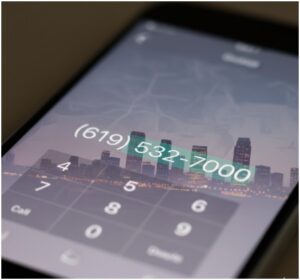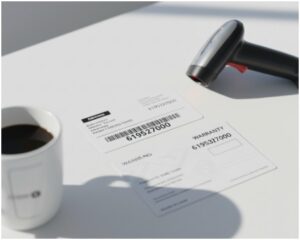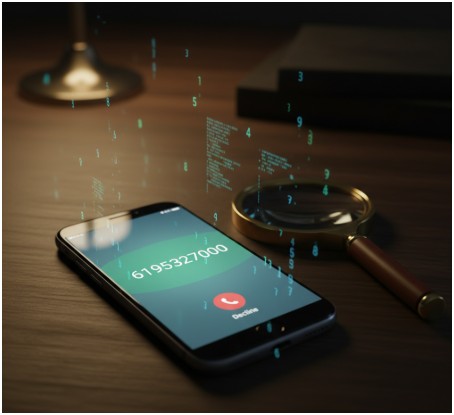I’ll never forget the first time I stumbled across 6195327000. I was scrolling through my phone late at night, trying to find an old contact, when this random number popped up on my call history.
It wasn’t saved under any name, and it looked oddly official. My curiosity got the better of me, and I started wondering: what is 6195327000 supposed to be?
That little spark of curiosity turned into a full-on investigation. I looked at it from every angle—phone number, ID number, data point—you name it.
If you’ve seen 6195327000 somewhere and it’s been bugging you too, stick with me. I’ll walk you through everything I uncovered, in plain, real-person language.
Is 6195327000 a Phone Number?

One of the first things that caught my attention was how perfectly 6195327000 fits the 10-digit format of a U.S. phone number. It even starts with 619, which is the area code for San Diego, California.
So yes—it can be read as (619) 532-7000. Numbers like this are usually linked to official offices, call centers, or service desks in that region.
I remember trying to call it just to see what would happen, and it rang like any normal business line would. It’s definitely not formatted like a scammy overseas number or a personal mobile number.
If you’ve spotted this number on your caller ID or in your phone logs, it’s very likely a legitimate San Diego-based line. It might be worth picking up (or calling back) if you’re expecting something official.
Could 6195327000 Be a Huge Data Value?
Another theory I explored was whether 6195327000 might be a large numerical data point—like a statistic. When you write it with commas, it becomes 6,195,327,000, which is just over 6.1 billion.
To put that into perspective, here’s how that size stacks up:
| Value Type | Example | Scale Compared to 6,195,327,000 |
| Population of United States | 339 million | Much smaller |
| Estimated global internet users | 5.4 billion | Slightly smaller |
| Seconds in 200 years | 6.3 billion | Roughly the same |
When a number is that massive, it’s probably not personal—it’s usually part of a dataset, population count, or financial figure. You might see it in reports, databases, or spreadsheets where such huge totals are common.
I once worked with a dataset tracking the number of digital messages sent globally per day, and the values were in this same billion-level range. So if you’ve seen 6195327000 inside a spreadsheet or report, chances are it’s just a raw data value, not a code or ID.
Could 6195327000 Be an Identification Number?

There’s also the chance that 6195327000 is simply an ID. Lots of systems use long numeric strings as identifiers, and they don’t have to mean anything by themselves.
It might be:
- A bank account number
- A product or serial number
- A customer ID or invoice number
What makes this tricky is that IDs like these are designed to be unique but meaningless on their own. So if you spot 6195327000 on a bill, document, or shipping label, it’s probably just a reference number the system uses behind the scenes.
That’s actually how I first came across a similar 10-digit number—it was printed on a warranty card, and for a second I thought it was a phone number. Turns out, it was just a registration ID.
How Can You Figure Out What 6195327000 Means in Your Case?
When I was trying to decode 6195327000, I realized that context is everything. Here’s the little method I now use anytime I bump into a random long number:
Step 1 — Look at where you found it.
> If it’s in your call log or voicemail, it’s likely a phone number. If it’s buried in a spreadsheet, it’s probably a data point. If it’s printed on a bill or tag, it’s likely an identifier.
Step 2 — Try formatting it.
Split it like a U.S. phone number: (619) 532-7000. If it rings like a normal line, that’s your answer.
Step 3 — Search it carefully.
Type the number in quotes into a search engine—”6195327000″—and see if any businesses, directories, or databases list it.
Step 4 — Consider privacy.
If it shows up in sensitive places like banking portals or ID cards, don’t search it publicly or share it. Treat it as personal data until proven otherwise.
I used these steps to figure out that my mystery number was a phone line from San Diego, and it saved me from a lot of wild guessing.
FAQs About 6195327000
Q1: Why would 6195327000 be calling me?
It could be from a business or government office based in San Diego. The 619 area code covers that region. If you’re unsure, let it go to voicemail or search the number online to see if it’s tied to an official organization. Many legitimate offices use direct lines that don’t show names.
Q2: Is 6195327000 a scam or spam number?
There’s no evidence it’s a known scam number. It follows the standard U.S. format and has the 619 code, which isn’t flagged as high-risk. Still, if you get suspicious calls from it, block it temporarily and report it using a caller ID app to be safe.
Q3: Could 6195327000 be someone’s account or ID number?
Absolutely. If you see it on paperwork, receipts, or shipping forms, it could be an internal account, customer, or order number. These are often randomly generated and don’t have meaning outside their system.
Q4: How do I find out what 6195327000 is specifically linked to?
The best way is to check the context—where you saw it. If it was on your phone, search it as a number. If it was in a document, check with whoever issued it. Numbers like this are usually easy to trace when you know where they came from.
Wrapping Up My Little Number Obsession
Chasing down the meaning of 6195327000 turned out to be more fun than I expected. It taught me how important context is when it comes to random long numbers. Without context, it’s just a string of digits. With context, it becomes either a phone number, a data point, or an ID.
So if you’ve been staring at 6195327000 like it’s a secret code, take a breath. Think about where you found it, and let that guide your next move. My little detective adventure showed me that most mysterious numbers are more ordinary than they seem—and honestly, that’s kind of comforting.
If you ever hit a similar mystery number in the future, you’ll know how to crack it too. Numbers might look intimidating, but they’re rarely trying to hide something magical—just something practical.

